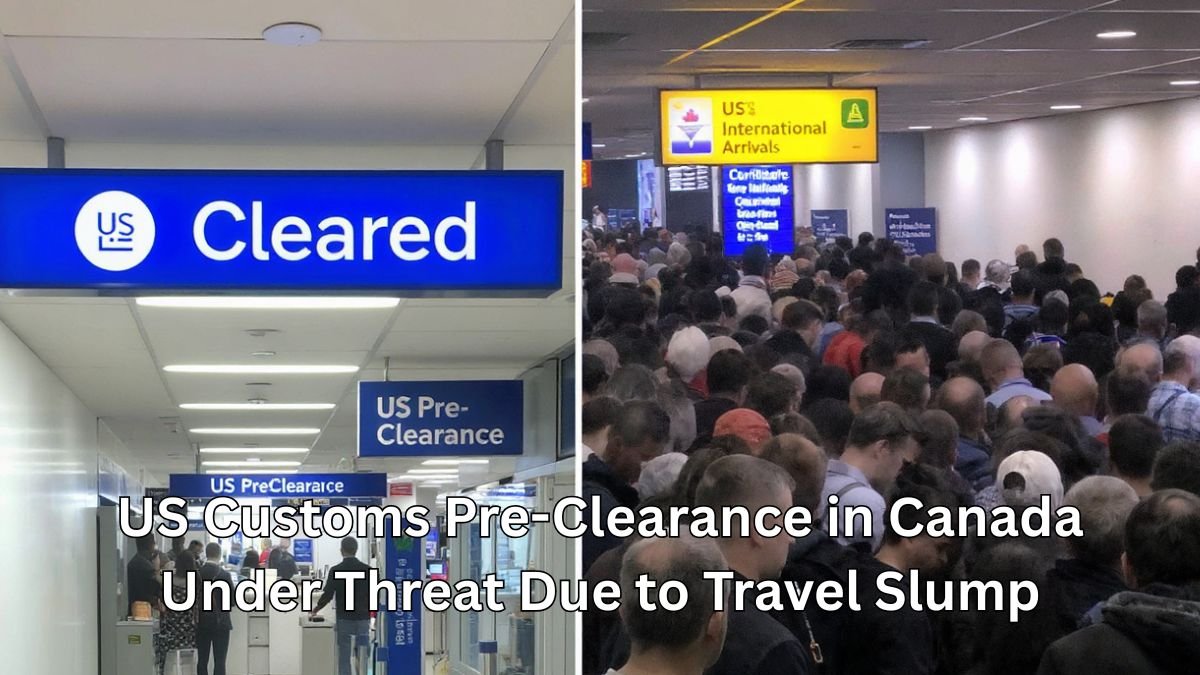The longstanding convenience of clearing US customs before you even leave Canada is under serious threat. US officials are now actively re-evaluating the popular pre-clearance service at Canadian airports, citing a significant and sustained drop in cross-border travel numbers that is making the program less economically viable.
The conversation was put front-and-centre by US Ambassador to Canada Pete Hoekstra at a recent business forum. He pointedly suggested that Washington may need to “take a look” at the program’s future, stressing that the service is funded entirely by the US government.
“We’re not sure we can make the numbers work anymore… Pre-clearance is something that is done at the expense of the U.S. government,” Hoekstra reportedly stated, signaling that the current volume of travelers no longer justifies the expense.
The Heart of the Issue: Dropping Numbers
The U.S. Customs and Border Protection (CBP) pre-clearance service allows passengers to complete all necessary customs, immigration, and agricultural inspections at select Canadian airports before boarding their flight to the US. This means they arrive stateside as domestic travelers, bypassing potentially massive international customs queues.
However, recent statistics paint a worrying picture:
- Air Travel Decline: The number of Canadian residents returning by air from the US in a recent August analysis was down more than 25% compared to the same month last year, according to Statistics Canada figures.
- Overall Slump: This mirrors a broader decline in cross-border travel, which includes a reported drop of over 34% in car travel from Canada to the U.S. year-over-year.
The current system operates in eight major Canadian airports: Calgary, Edmonton, Halifax, Montreal, Ottawa, Toronto, Vancouver, and Winnipeg. In 2024, the pre-clearance program processed over 22 million travelers, representing almost 16% of all commercial air passengers entering the United States.
Major Impact on Airlines and Travelers
A potential rollback or cancellation of the service would have significant repercussions for travelers and the Canadian aviation industry:
- Longer Travel Times: Experts warn that losing pre-clearance could add hours to a typical cross-border journey, particularly for passengers connecting to other flights in the U.S.
- Canadian Carriers Lose an Edge: Airlines like Air Canada and WestJet heavily promote the seamless experience of pre-clearing customs in Canada. Losing this benefit could diminish the appeal of Canadian hubs for connecting international passengers, directly affecting the airlines’ competitive advantage and their US-bound route planning.
- Economic Blow to Airports: Busy hubs like Toronto Pearson (YYZ), Vancouver (YVR), and Montreal (YUL) stand to lose significant revenue and their appeal as North American connecting points if the service is withdrawn.
While US Ambassador Hoekstra has stated that “Nobody said we’re ending pre-clearance,” industry analysts view the comments as a serious warning, or even a ‘threat,’ intended to spur a rebound in Canadian tourism to the United States.
For now, the service remains operational. However, the discussion underscores a serious financial and logistical re-evaluation by the US government that could soon change the reality of travel for millions of North American passengers.
Conclusion
The convenience of US pre-clearance at Canadian airports—a service running since the 1950s—is under formal review due to plummeting travel figures and concerns over US-borne costs. While a definitive decision has not been made, any reduction or elimination of the service would likely lead to longer travel times, reduced connectivity options, and a significant operational and financial blow to Canadian airports and airlines. Travelers planning trips to the U.S. should monitor this developing situation closely, as it could fundamentally change the cross-border travel experience.
Affiliate Disclosure
This article does not contain affiliate links. The information provided is purely for news and informational purposes.
Disclaimer
This article is for informational purposes only and is based on public statements made by US officials and reported travel data. It does not constitute official travel advice, and travelers should always consult the official website of the U.S. Customs and Border Protection (CBP) for the most current regulations and service status. The opinions expressed by aviation analysts are their own and do not necessarily reflect the views of the publication.







